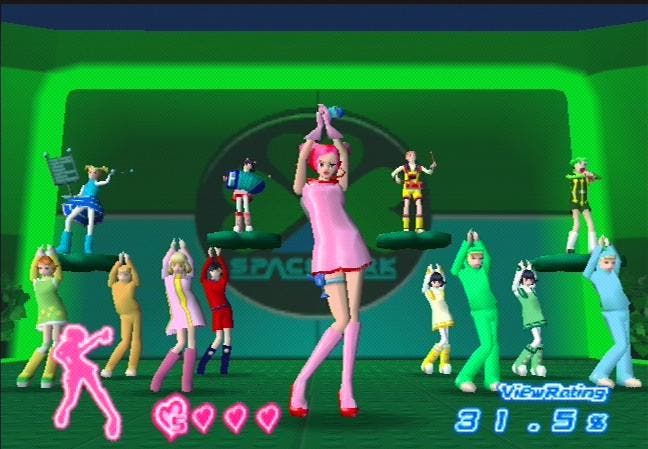Dreamcast Cult Classics
21 games that deserved better.
Ferrari F355 Challenge
SEGA/Sega-AM2
The flipside to OutRun's giddy arcade perfection, lifelong SEGA man Yu Suzuki poured his love of all things Ferrari into this seminal purist's racing game. On a conceptual level, the 1999 game was driving in the opposite direction to most racers of the time. Led by Gran Turismo, with its apparently endless garage of licensed vehicles, the industry trend was to pack as many collectible cars into a racer as possible. Suzuki's title instead offered a small number of real-world tracks and just one car with which to tackle them - the F355 of the title. Many found this restriction weird and scary, but for the hardcore few who appreciated the laser-precise focus, it remains one of the most testing racing games ever made. Britsoft survivor System 3 tried to revive the idea last year, but failed to match Suzuki's passion or precision.
Virtual-On
Activision/Sega AM3
Virtual-On - or Cyber Troopers Virtual-On Oratorio Tangram if you want to be really nerdy - was the only entry in this long-running mecha action series to land on the Dreamcast, but it still made a big impression on those who came across it. Imagine Armored Core crossed with Space Harrier, but hopped up on manga pills and you're close to the sensory overload on offer. Thundering around neon-hued environments, blasting all and sundry with a daunting array of mechanised mobile weapons, it was hardly nuanced, but it was definitely impressive. The Dreamcast port even came with a beefy (if rather ugly) Twin Stick peripheral to better recreate the arcade experience in the home. The series later moved to the PS2, where the Dual Shock's analogue sticks made such silly plastic excesses sadly redundant.

Space Channel 5
SEGA/United Game Artists
Back in the days before music games were mainstream, when Parappa and Gitaroo Man were merely oddball representatives of an evolving genre, SEGA unleashed Space Channel 5 - arguably the campiest game ever made. As the flamboyant mini-skirted Ulala, you had to report for the titular futuristic telly station on a funky, rhythmic alien invasion. You did this, not through extensive research and reportage, but by dancing really, really well. With its bright and bold palette and rather shameless similarity to Deee-Lite's Groove Is In The Heart video, this certainly wasn't a game afraid to cast its net wider than the traditionally male gaming audience. It even featured a cameo from Michael Jackson, back when such a thing was considered a selling point and not a terrifying mistake.
Skies of Arcadia
SEGA/Overworks
Quite simply one of the best, and most undervalued, role-playing games to emerge from Japan, the fact that the effortlessly lovely Skies of Arcadia never got to enjoy the countless sequels of its better established rivals is a black mark against the entire games industry. Following cocky sky pirate Vyse and his crew as they pilot their floating galleon around a charming steampunk world, the game offered both the expected dungeon-crawling combat encounters along with a very enjoyable ship-to-ship battle system. The random encounters are, admittedly, a bit of a chore but Arcadia looks, feels and plays so differently to all the other JRPGs that it's hard to hold that awkward tradition against it.
Seaman
SEGA/Vivarium
Seaman has the dubious distinction of being quite possibly the strangest and most sinister game ever produced for public consumption. In essence it was a virtual pet, an aquatic chum that you nurtured to adulthood using the Dreamcast microphone. But that barely scratches the surface of the mesmerising horror of this big bag of wrong disguised as a videogame. Chief among the game's crimes against nature is that your beloved pet is not some cuddly Pokémon or Tamagotchi, but a talking fish with a dispassionate human face, staring into your soul like something sprung from the mind of Hieronymous Bosch. Consider that the western release was narrated by Leonard Nimoy and you can probably guess why Seaman caused more nightmares than coos of paternal joy. Need more evidence? Just watch.

Trigger Heart Exelica
Warashi
Released in 2006, long after the Dreamcast was supposedly dead and buried, this innovative Japanese shoot-'em-up was popular enough to make its way to Xbox Live Arcade for wider consumption. With only two ships and five stages, it's clearly designed with the high-score addict in mind. Where Exelica, er, excels is in its clever anchor system which enables players to snag enemy craft and either use them as shields or projectile weapons, spinning them around and hurling them into the fray like an Olympic hammer throw. Mastering this system is the key to clearing the relentless onslaught of enemies, making it considerably different to most caravan shmups.
Chu Chu Rocket
SEGA/Sonic Team
Famously the first major console game with online support, Chu Chu Rocket was supposed to herald a bright new dawn for multiplayer gaming, but instead seemed like another graphic illustration of the Dreamcast being too damned far ahead of its time for its own good. Wisely given away for free in Europe by SEGA, this charming puzzle game involved guiding mice around a 2D chequered board into rockets while avoiding cats. Although review scores were unanimously positive, most critics agreed that online play could have been somewhat slicker, and SEGA's bold online experiment struggled to gain momentum from that point on. One day this'll get a cheap and cheerful XBLA or PSN release and fulfill its obvious potential. Until then, a moment's silence for another lost Cult Classic, and a fitting place to end our exhaustive roundup of all things Dreamcast.
Compiled by Kristan Reed and Dan Whitehead.
